The 1916 penny is considered cash cows by many. After all, rare editions have been sold for as much as $58,750.
If you have a 1916 penny at hand, then you should know about its worth. Fortunately, we have this comprehensive guide on the value of this popular Lincoln wheat cent.
Without further ado, let’s get started!
1916 Penny Details
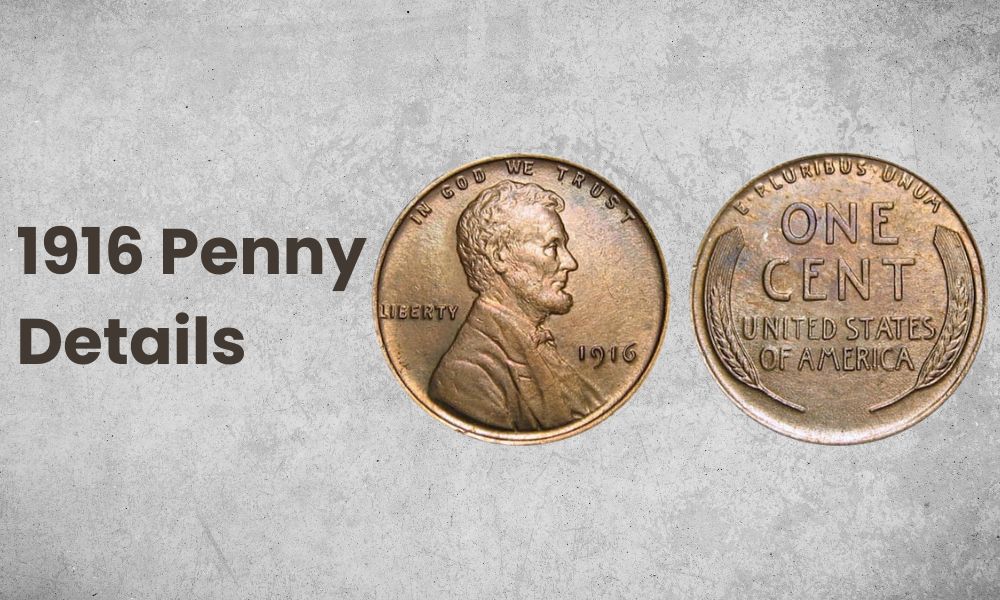
- Category: Lincoln, wheat reverse (Bronze)
- Mintage: 131,833,677
- Minted at: Philadelphia
- Mint mark: No Mint Mark
- Strike type: Business
- Obverse Designer: Victor D Brenner
- Reverse Designer: Victor D Brenner
- Metal Composition: 95% Copper and 5% zinc and tin
- Diameter: 19 mm
- Mass / Weight: 11 grams
- Edge: Plain
- Coinage years: 1959-1968
1916 Penny Value Chart
| Mint Mark | Good | Fine | Extremely Fine | Uncirculated | Proof |
| 1916 No Mint Mark Penny | $0.57 | $0.92 | $10 | $23-$40 | $3,202 |
| 1916 D Penny | $1.16 | $3.38 | $17 | $115-$144 | n/a |
| 1916 S Penny | $2.05 | $3.98 | $35 | $134-$233 | n/a |
| 1916 Proof Penny | n/a | n/a | n/a | n/a | $7,300 |
1916 Penny Value and Varieties Guides
There are four 1916 penny editions available in the market (and auction houses, of course.) Let’s discuss each one of them.
1916 No Mint Mark Penny
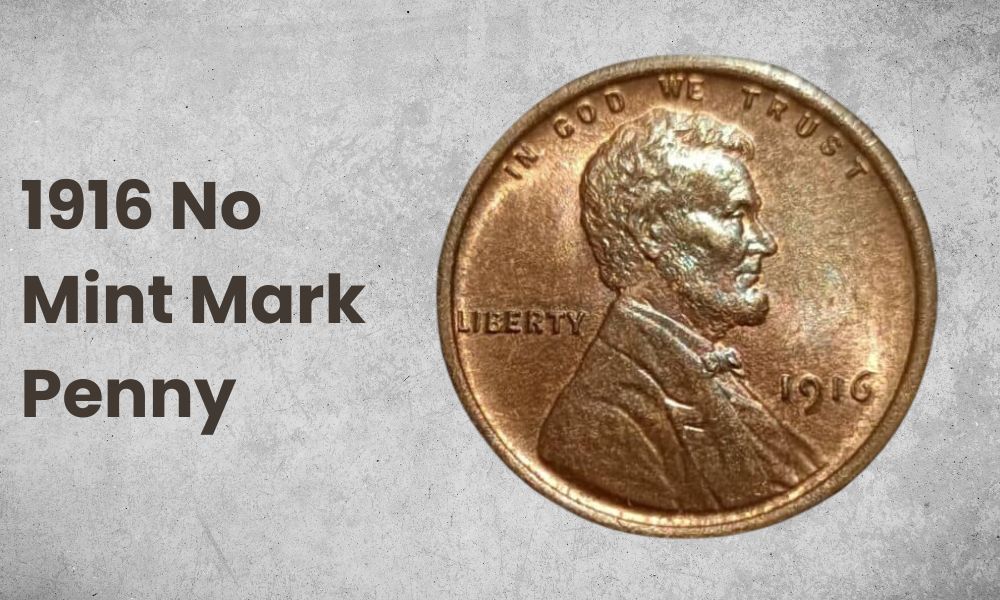
- Category: Lincoln, wheat reverse (Bronze)
- Mintage: 131,833,677
- Minted at: Philadelphia
- Mint mark: No Mint Mark
- Strike type: Business
- Obverse Designer: Victor D Brenner
- Reverse Designer: Victor D Brenner
- Metal Composition: 95% Copper and 5% zinc and tin
- Diameter: 19 mm
- Mass / Weight: 11 grams
- Edge: Plain
- Coinage years: 1959-1968
The obverse or front side of the 1916 no mint mark penny features the tuxedo-clad President Abraham Lincoln. Victor Brenner, a famed sculptor, designed this. Many historians believe this image was derived from the president’s 1864 photo.
Apart from Lincoln’s commanding image, the front side also features the motto “In God We Trust” on top. The word “Liberty” is found near Lincoln’s backside, while the year “1916” is near his chest.
The reverse, meanwhile, features two wheat stalks, hence its name “wheat pennies.” It also showcases the motto “E Pluribus Unum” on top and the designation “One Cent” on top of “United States of America.”
The value of circulated no-mint mark pennies ranges from $0.57 for good-quality coins to $10 for extremely fine currency. On the other hand, Uncirculated versions are valued at $23 to $40.
Mint state coins sell particularly well, for a coin with an MS 67 grade was sold for a surprising $8,338 in the year 2004.
1916 D Penny
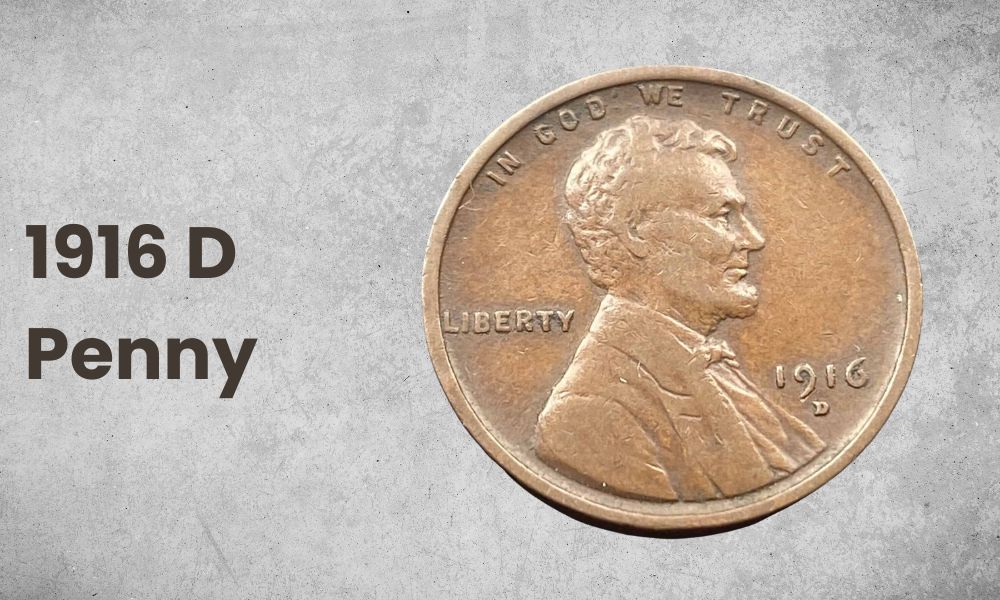
- Category: Lincoln, wheat reverse (Bronze)
- Mintage: 35,956,000
- Minted at: Denver
- Mint mark: D
- Strike type: Business
- Obverse Designer: Victor D Brenner
- Reverse Designer: Victor D Brenner
- Metal Composition: 95% Copper and 5% zinc and tin
- Diameter: 19 mm
- Mass / Weight: 11 grams
- Edge: Plain
- Coinage years: 1959-1968
The 1916 D penny is almost similar to the appearance of the no-mint mark penny. However, it bears the letter ‘D’ under the year 1916 to connote that it was minted in the Denver location.
Circulated 1916 D pennies are worth about $1.16 (good) to $17 (extremely fine.) Meanwhile, uncirculated coins are valued at $115 to $144.
Just like no mint mark pennies, mint state D pennies can fetch a pretty amount at the auction house. In 2016, an MS 67 1916 D penny was sold for a whopping $58,750.
1916 S Penny
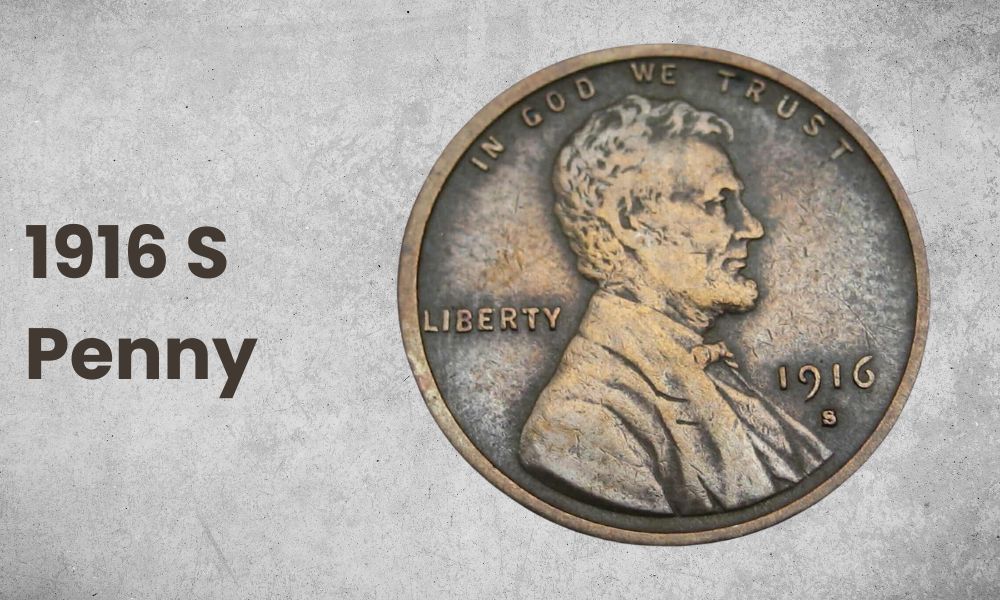
- Category: Lincoln, wheat reverse (Bronze)
- Mintage: 22,510,000
- Minted at: San Francisco
- Mint mark: S
- Strike type: Business
- Obverse Designer: Victor D Brenner
- Reverse Designer: Victor D Brenner
- Metal Composition: 95% Copper and 5% zinc and tin
- Diameter: 19 mm
- Mass / Weight: 11 grams
- Edge: Plain
- Coinage years: 1959-1968
The S penny is one of the coins produced in the San Francisco mint in 1916. Again, it can be differentiated from the Philadelphia and Denver-produced currency by the letter ‘S’ under the year 1916.
Circulated 1916 S pennies are valued at $2.05 (good) to $35 (extremely fine.) Uncirculated denominations, on the other hand, are pegged at $134-$233.
Even if your 1916 S penny does not belong to a pristine mint state, it can still make a pretty buck. In fact, an MS 65 1916 S penny was sold for an impressive $27,600 in the year 2004.
1916 Proof Penny
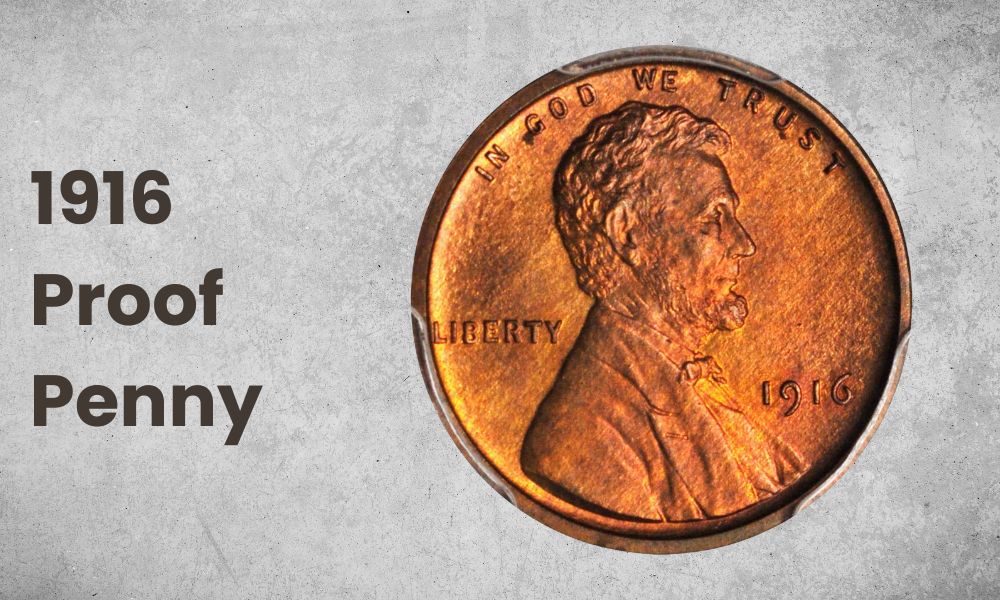
- Category: Lincoln, wheat reverse (Bronze)
- Mintage: 1,050
- Minted at: Philadelphia
- Mint mark: No Mint Mark
- Obverse Designer: Victor D Brenner
- Reverse Designer: Victor D Brenner
- Metal Composition: 95% Copper and 5% zinc and tin
- Diameter: 19 mm
- Mass / Weight: 11 grams
- Edge: Plain
- Coinage years: 1959-1968
Apart from the no mint mark penny, the Philadelphia mint produced the 1916 proof penny. This means these coins were made with a special die, so they have a finer strike, a deeper cameo, and a frostier luster.
The rest of its characteristics are similar to the no-mint mark penny, for they are created in the same location after all.
It has Lincoln’s side profile, the motto “In God We Trust,” “Liberty,” and the year “1916 on the obverse. The reverse, meanwhile, features the motto “E Pluribus Unum” on the top, the designation “One Cent,” and the country “United States of America” in the center. And, as with other wheat pennies, it bears the design of wheat stalks on each side.
This proof coin is the very definition of rare, for only 1,050 of these pennies were produced in the said year. This makes for its high value of $7,300.
However, you may get even more money for this – given that a PF 67 grade coin was sold for a commanding $34,500 in 2011.
Also Read: Top 20 Most Valuable Old Pennies Worth Money (Penny Collection)
1916 Penny History
The 1916 Penny is part of the Wheat penny series, a collection of US coins that is the first to feature a human portrait. Although Lady Liberty was imprinted on past pennies, it’s a mere personification, not an actual real person like Abraham Lincoln.
History
US pennies or one-cent coins were initially produced in the year 1787.
From 1793 to 1857, they were made with approximately 100% copper. The composition was reduced to 88% copper until 1864, when pennies were made with 95% copper. This composition resulted in its generally red appearance – which can also affect its value.
Due to soaring copper prices, later pennies were made with zinc.
Minting and Specifications
The Lincoln wheat pennies were first struck in 1909, with all three locations producing them (Philadelphia, Denver, and San Francisco.)
The 1916 penny, as with other wheat cents of its era, had a weight of 3.11 grams and a diameter of 19 mm. It had a raised collar and smooth edges.
Idea Conception and Design
President Theodore Roosevelt was deeply impressed (and inspired) by the works of Victor David Brenner. As such, he came up with the idea to ask Brenner to bring Lincoln ‘back to life’ on the penny.
Although Brenner was a seasoned sculptor, he was new to designing coins. He wanted a complex style, while US Mint Chief Engraver Charles Barber wanted a design that was easy to strike. As such, he had to revise his plans several times before Barber finally approved one.
The revisions proved helpful, though, for the final result was Lincoln’s portrait that appeared in the center – so that more space was left on the top.
Fun fact: Brenner’s initials (VDB) were initially inscribed on the coin, but they were originally deemed too obvious. They were removed before minting and were not restored until 1918. From this point forward, his initials are near the president’s shoulder.
Brenner’s obverse design was used until 1959 when it was replaced by the creation of Frank Gasparro. This time, the new style showcased the Lincoln Memorial building.
The reverse was again replaced in 2009 with four designs honoring Lincoln’s bicentennial birth anniversary. By 2010, Bass’ design was used from the Lincoln cent’s back side.
1916 Penny Grading
There are four types of 1916 pennies: two coming from Philadelphia (circulated and proof versions) and two more coming from Denver and San Francisco, respectively.
How these pennies are graded depends on various factors. First is scarcity, or rarity, for that matter. Only 1,050 proof coins were produced then, so these pennies are more valuable than those created for circulation by the three mints.
Another vital factor is the condition. 1916 pennies are made with copper, so the redder the coin is, the higher the value.
Lists of 1916 Penny Errors
Errors can lower the value of most things, but it’s not the case with the 1916 penny. In fact, a coin with any of the following errors is sure to sell for a higher price in the market:
1. 1916 Penny Off-Center Error
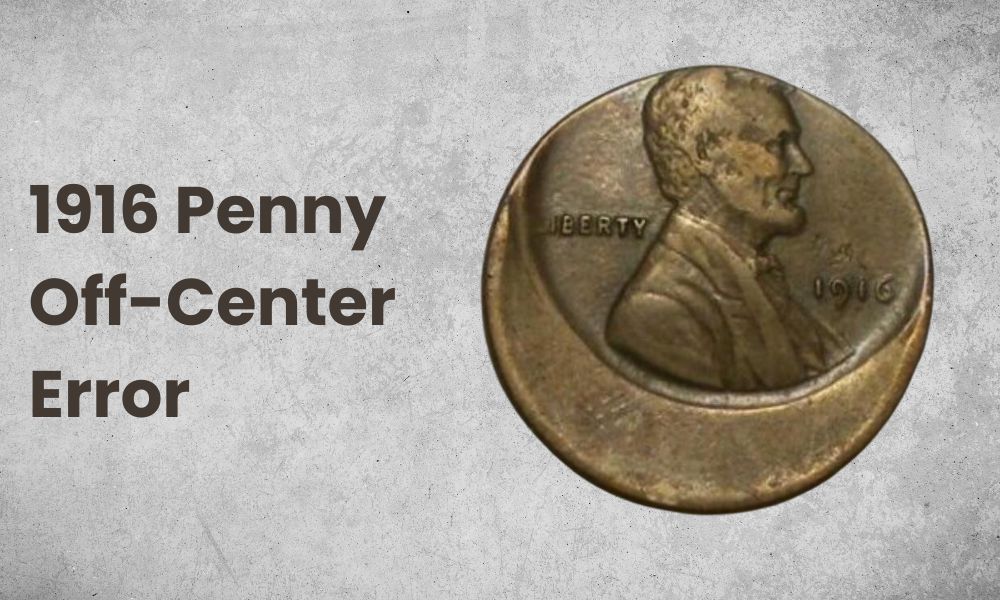
This mistake takes place when the steel die and planchet are misaligned. As a result, the design is not imprinted in the middle, so most of the design goes missing.
Off-center errors are measured and valued according to their percentages. For example, a 50% off-center 1916 penny has been known to sell for $100. Meanwhile, those with 1% to 10% off-center percentages may only sell for $10 to $25.
2. 1916 Penny Repunched Mint Mark Error
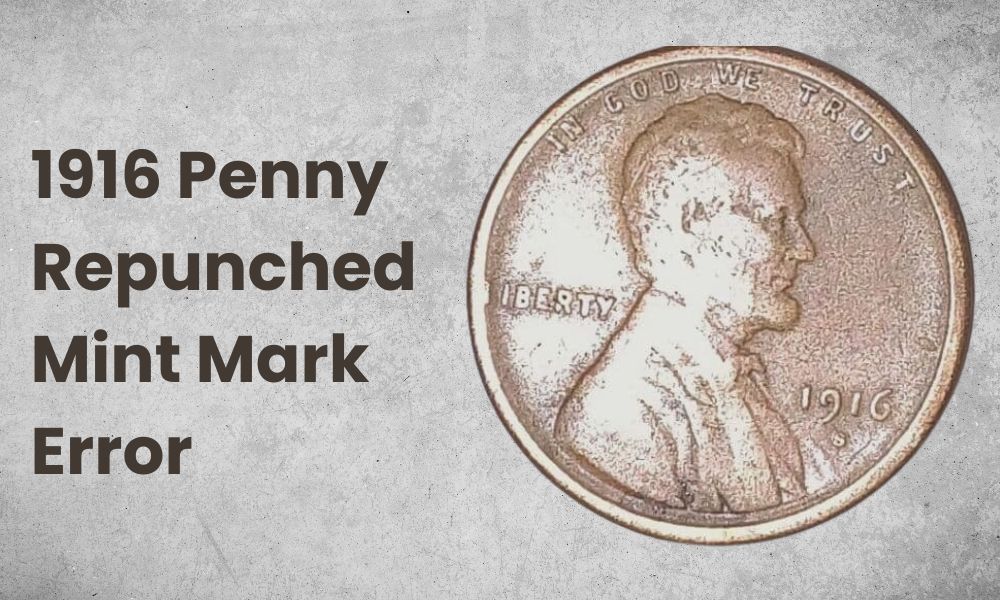
A repunched mint mark error occurs when the die is struck twice on the blank planchet. As a result, the mint mark appears ‘double.’
More often than not, the second mintmark looks smaller/thinner than the first one.
Mint marks are labeled according to direction, i.e., north, east, south, etc.
This error is quite common for coins made before 1989, so cents with this mistake don’t sell that much in the market. That being said, you can still get $5 to $20 for an RPM error.
3. 1916 Penny Double Die Error
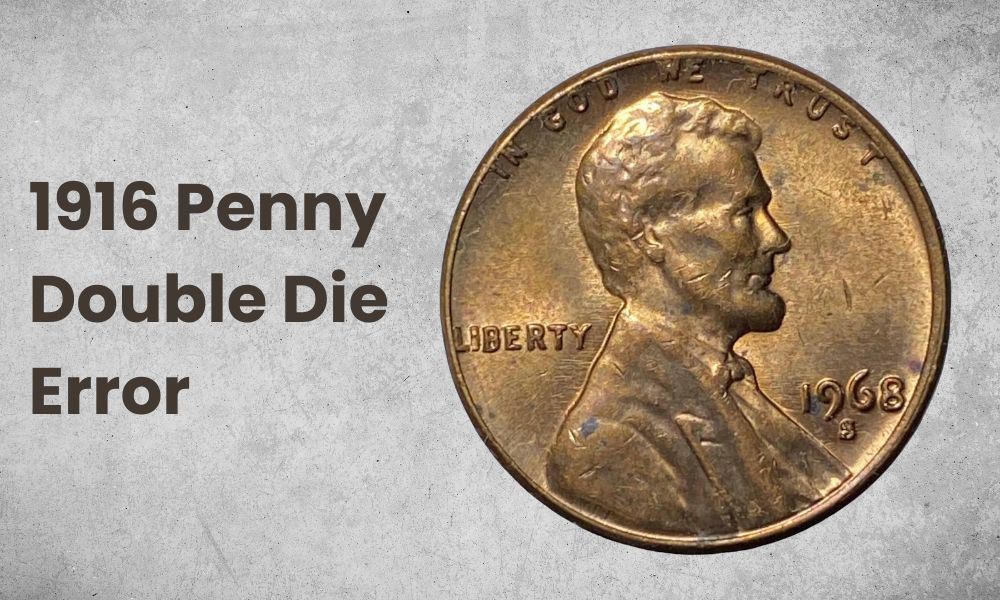
This mistake occurs when a steel die strikes the coin twice. And depending on the outcome, your currency may have a ‘minor deviation’ or a ‘major structural anomaly.’
A typical example of a double die error is one where the top part is thicker.
The double die error, which can result in a rotated or distorted hub, is a mistake that can earn you anywhere from $35 to $55.
4. 1916 Penny Die Crack Error
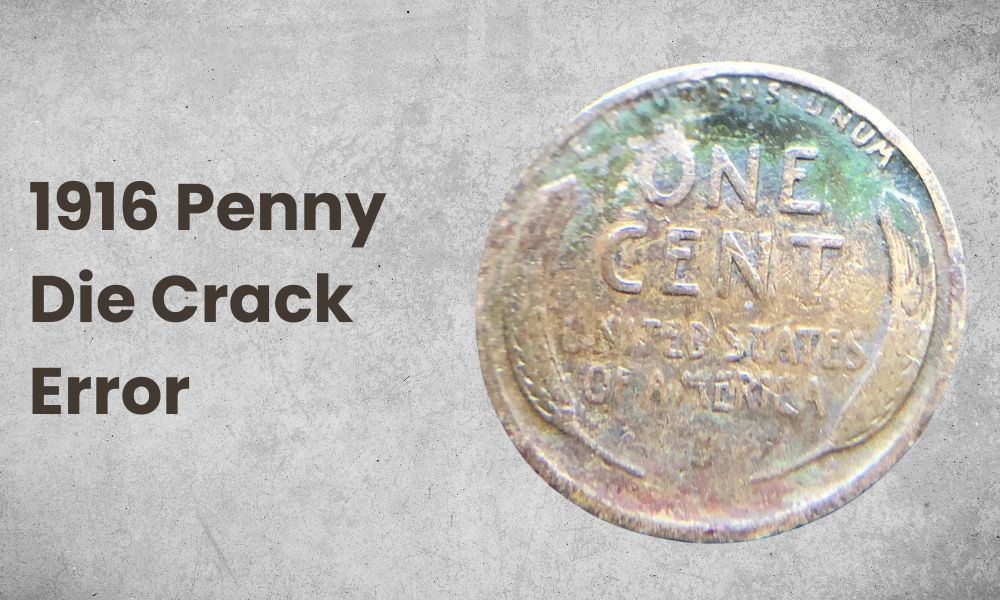
A die crack error takes place when damaged/old dies strike the coin. The result is a surface that exhibits noticeable bumps or splits.
Coins with minor defects are worth $2 to $10, while those with apparent mistakes can sell for as much as $200.
1916 Penny FAQs
How much is a 1916 penny worth?
The worth of a 1916 no mint mark penny varies according to its state. You can get the following amounts for the following grades:
- $0.57 for a good condition coin
- $0.92 for a fine condition penny
- $10 for an extremely fine wheat cent
- $23 to $40 for uncirculated Lincoln pennies
- $3,202 for a proof Lincoln cent
How much is a 1916 D penny worth today?
1916 pennies minted in Denver are worth the following:
- Good condition – $1.16
- Fine condition – $3.38
- Extremely fine condition – $17
- Uncirculated – $115 to $144
What is the value of a 1916 S wheat penny?
A 1916 S wheat penny is valued according to grade. Estimates range from:
- $2.05 for a good condition penny
- $3.98 for a fine state one-cent
- $35 for an extremely-fine Lincoln penny
- $134 to $233 for an uncirculated 1916 wheat cent
Is a 1916 penny rare?
Yes, depending on the condition. Mint, uncirculated 1916 pennies are considered scarce, so they sell higher at the market.
Then there’s the proof penny with only 1,050 copies minted. These are deemed ultra-rare, which is why they’re valued at $7,300 or more.
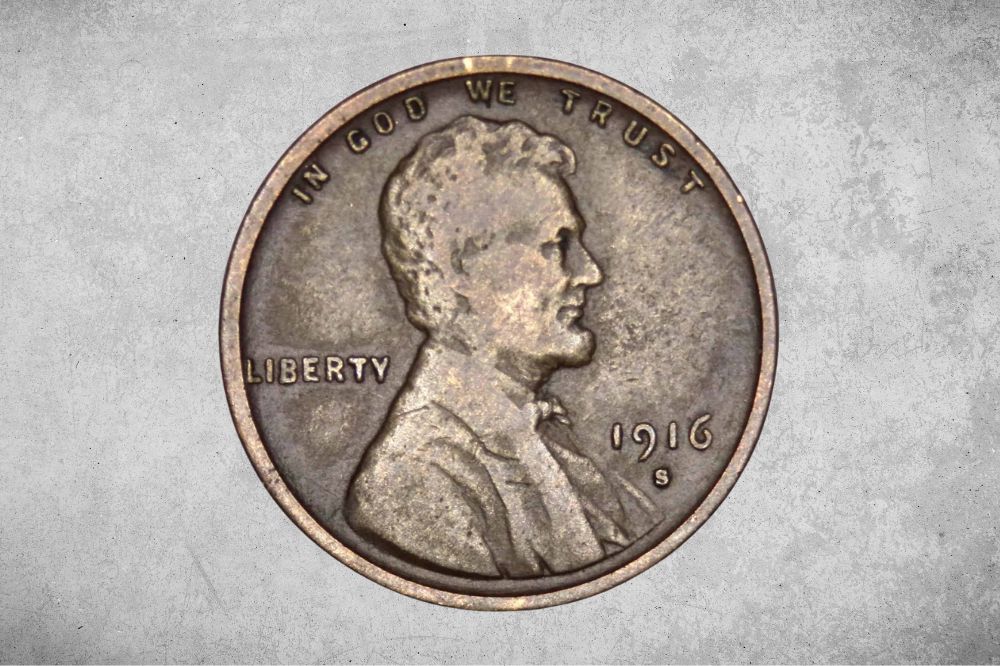
The above facts are all wrong. The wheat pennies were minted from 1909-1958. Prices differ greatly from what is shown here. I knew that before consulting my coin value book.